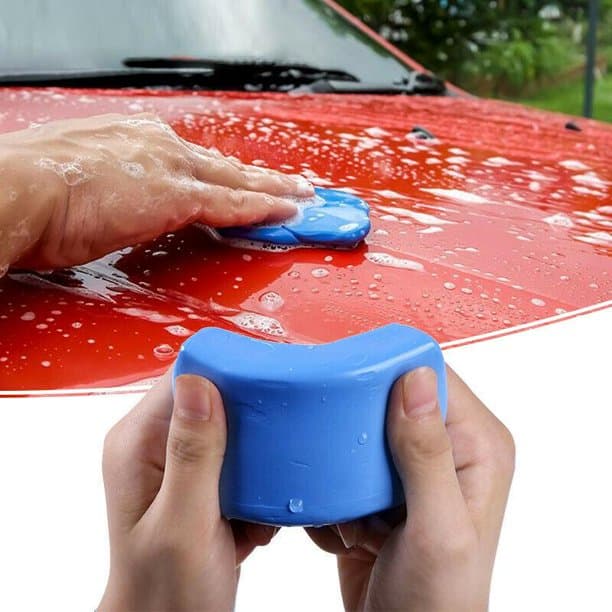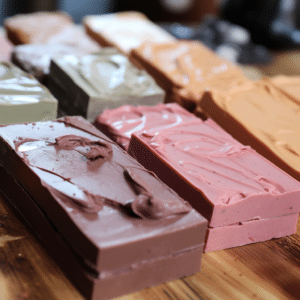
Clay Bar vs. Wax: Essential Differences and Benefits
Getting your car detailed is necessary to ensure it looks great and maintains its sheen. It also protects your car from contaminants and scratches that damage your paint.
When considering having your car detailed by professionals, it’s crucial to understand some detailing staples like the difference between full wax with clay bars and a car wash. Doing so can help you select the service you’d like for your car and get the treatment you want.
Probably you’ve seen clay bar and cleaner wax on the store shelves at your auto parts store or Walmart, but don’t get the drift about them. What’s the difference between clay bar and wax? Read on to learn more about clay bar, wax and their differences.
Overview: Clay Bar vs Wax

About Clay Bar Detailing
Clay bar detailing involves using an engineered elastic clay compound to remove particles from a car’s surface that a thorough car wash cannot remove. The particles may be metal dust, road grit, brake dust, and industrial pollution.
As you ride your car, it gets pelted with tiny particles that bond to the surface. These particles can move through your car’s protective coat, through the paint, and down to the metal frame. With time, the particles build up and can destroy your car paint.
How do you know your car has particle buildup? Run your hands along with the paint after washing and feel the texture. If the car’s texture feels bumpy, your car has particle buildup. You’ll, therefore, need clay bar detailing because regular car washing won’t solve the problem.
How Does Clay Bar Detailing Work
Clay bar detailing happens after a car is washed and dried before polishing. During the detailing process, you’ll need the clay bar, microfiber cloth, and a detailing spray or clay bar lubricant.
The detailing spray or clay lubricant is first applied to a small area of your car. This is crucial to avoid damaging your car. The clay is then glided along the body of the car. The clay grabs the car’s surface during this process, picking particles that bonded to the frame and paint.
Immediately the clay stops gripping the surface and glides smoothly; that’s a sign it has removed all the particles from the area. Wiping follows to remove any remaining residues, and then a touch-test is done. The paint should feel smooth with no bumps.
The process is then repeated until the entire vehicle is done. A hand-wax and machine buff follow to give the vehicle a new-car shine.
How Often Should You Clay Bar Your Car
Several factors determine how often you should clay your car. So, there’s no straight answer to how frequently you should clay bar your vehicle.
Clay bar your car anytime you feel the need to. After each washing and drying, pass your hand over your vehicle’s paint and feel its texture; if it’s bumpy, your car needs a clay bar.
Another thing to consider is how often you take your ride out. If your car hardly goes out except for weekends, applying clay bar twice or thrice a year is okay. But if you use it regularly, then three times every six months should be fine.
Where you stay also plays a considerable role in clay bar frequency. If you live near industries, it’s easy for your vehicle to have contaminants stick to it. Thus, more frequent clay bar application.
About Car Wax Detailing
Car wax is a synthetic coating from natural oils, carnauba wax, petroleum distillates, and beeswax. The wax protects the car exterior by forming a layer that protects the car paint. Many types of car wax are on the market, but they all serve the same purpose, protecting your car’s overall paint surface.
Car wax comes in different types. Some are in powder form, while others are liquid. Application of some wax involves spraying while others pour.
Applying car wax is one of the most crucial things in maintaining and protecting your car. The car wax help restore the gloss of your vehicle paint, making it look new.
How Does Car Wax Detailing Work
Before the wax is applied, the car is washed and dried. Doing so ensures the wax layer applies perfectly to the body. Take note of the products used for waxing. Many people confuse waxing products and polishing products. Reading labels is crucial in letting you know which is which.
When applying car wax, a sponge or microfiber is usually used. If using a microfiber, ensure it’s soft and not rough. A rough microfiber can scratch the vehicle’s body.
Wax is applied to the vehicle through thorough car care, whereby a wax layer is installed over a clear coat of a car’s paint. The wax-like coating protects the clear coat for a long time. Note that waxing needs to be done in a closed location and not under the sun. Waxing under the sun can make the car body overheat, making the waxing results less great.
Again, the wax layer can disappear during car washing. The layer can start fading in about 3-5 car washes. So, unless it’s necessary, don’t wash your car too often. Doing so reduces your vehicle’s wax layer. Instead of washing, wiping with water and a clean cloth is okay.
How Often Should You Wax
How often to wax your ride depends on your needs and preferences. But generally, most manufacturers recommend waxing once every three months. This way, your vehicle paint gets good care while avoiding things that can dull your paint, like abrasives.
Although clay bar and cleaner wax can be used for cleaning to some extent, they are not the same and serve different purposes. Cleaner wax is a protect ant, while clay bar is a contaminant remover. Clay bars are designed to remove contaminants and particles that cannot be removed by regular car washing. On the other hand, waxes are formulated to protect car paints and make vehicles shine.
Conclusion
Waxes and clays can be used together. But it’s ideal for a car to be washed, clayed, compounded and polished (if need be), and waxed with a finishing non-abrasive wax.
